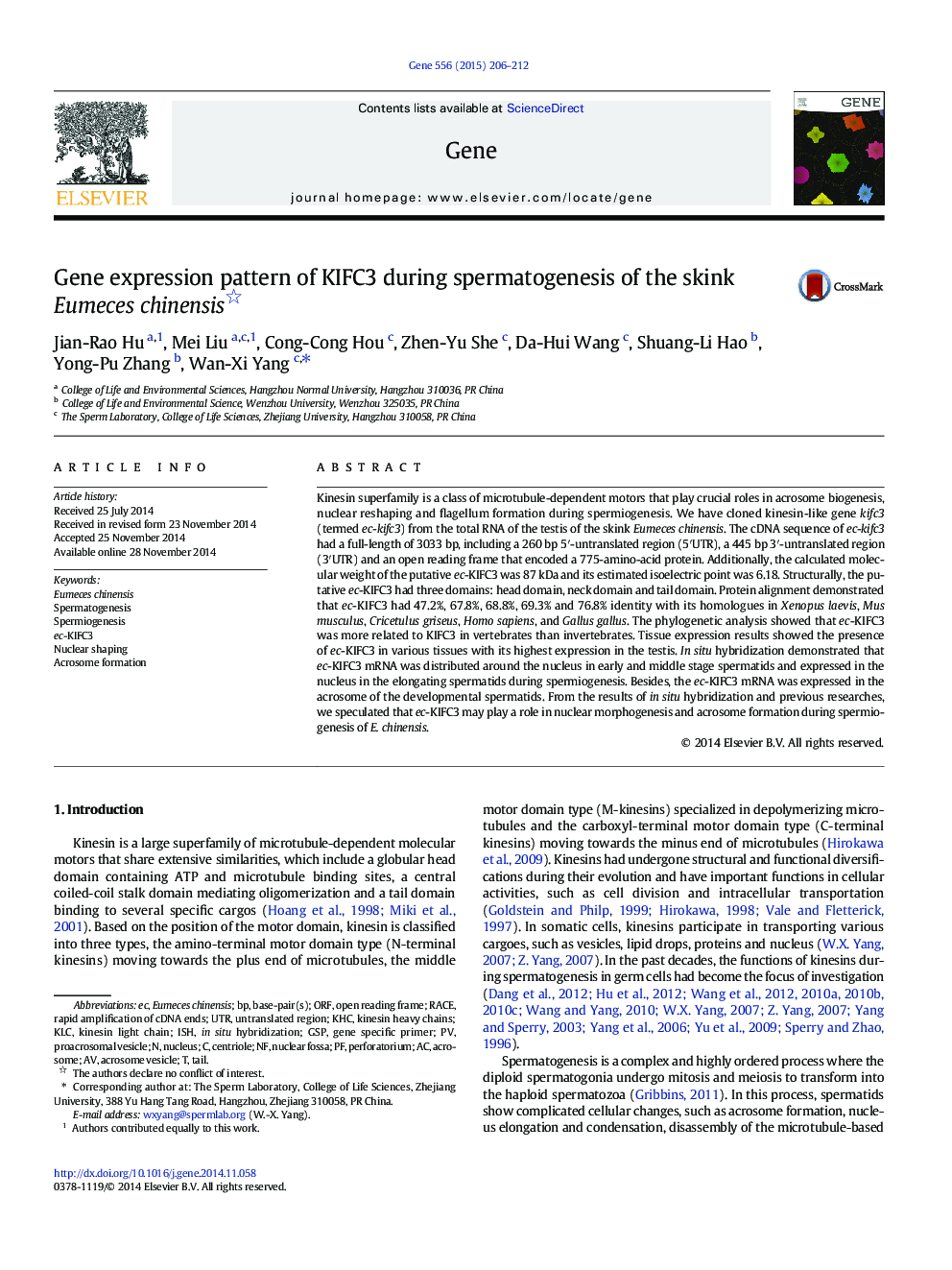| Article ID | Journal | Published Year | Pages | File Type |
|---|---|---|---|---|
| 5905623 | Gene | 2015 | 7 Pages |
Abstract
Kinesin superfamily is a class of microtubule-dependent motors that play crucial roles in acrosome biogenesis, nuclear reshaping and flagellum formation during spermiogenesis. We have cloned kinesin-like gene kifc3 (termed ec-kifc3) from the total RNA of the testis of the skink Eumeces chinensis. The cDNA sequence of ec-kifc3 had a full-length of 3033Â bp, including a 260Â bp 5â²-untranslated region (5â²UTR), a 445Â bp 3â²-untranslated region (3â²UTR) and an open reading frame that encoded a 775-amino-acid protein. Additionally, the calculated molecular weight of the putative ec-KIFC3 was 87Â kDa and its estimated isoelectric point was 6.18. Structurally, the putative ec-KIFC3 had three domains: head domain, neck domain and tail domain. Protein alignment demonstrated that ec-KIFC3 had 47.2%, 67.8%, 68.8%, 69.3% and 76.8% identity with its homologues in Xenopus laevis, Mus musculus, Cricetulus griseus, Homo sapiens, and Gallus gallus. The phylogenetic analysis showed that ec-KIFC3 was more related to KIFC3 in vertebrates than invertebrates. Tissue expression results showed the presence of ec-KIFC3 in various tissues with its highest expression in the testis. In situ hybridization demonstrated that ec-KIFC3 mRNA was distributed around the nucleus in early and middle stage spermatids and expressed in the nucleus in the elongating spermatids during spermiogenesis. Besides, the ec-KIFC3 mRNA was expressed in the acrosome of the developmental spermatids. From the results of in situ hybridization and previous researches, we speculated that ec-KIFC3 may play a role in nuclear morphogenesis and acrosome formation during spermiogenesis of E. chinensis.
Keywords
Related Topics
Life Sciences
Biochemistry, Genetics and Molecular Biology
Genetics
Authors
Jian-Rao Hu, Mei Liu, Cong-Cong Hou, Zhen-Yu She, Da-Hui Wang, Shuang-Li Hao, Yong-Pu Zhang, Wan-Xi Yang,
